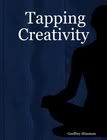 In my last post on rutbusting, I talked about ways writers and other artists can turn to different resources to shake up their routines and help break through creative block. This time, I'd like to talk about a closely related idea: self-imposing limitations and intentionally creating barriers in your own work.
In my last post on rutbusting, I talked about ways writers and other artists can turn to different resources to shake up their routines and help break through creative block. This time, I'd like to talk about a closely related idea: self-imposing limitations and intentionally creating barriers in your own work.
At a previous stage in my career, I worked in-house on the creative team of a Fortune 500 company. Like most big companies, they put a lot of stock in the idea of branding. As such, they had rigid graphic design standard. Certain visual elements had to go in the same place on every piece. Headers, subheads, and fonts were all accounted for.
New designers groaned. Designers who had been around for a while, and had a chance to work with the guidelines, loved them. For them, knowing right away what they could and could not do eliminated the fear of staring at a blank page. Further, they felt that being forced to work within barriers forced them to reach deeper than normal and create new concepts they would not have if they were given free range. In essence, these barriers forced them out of comfort zones.
For writers, there are many possibilities for self-imposing barriers:
- Fiction writers can limit story length to 500 words or write in haiku.
- Non-fiction writers can write without using the word "I".
- Advertising writers can limit headlines to three words, one of which must be a verb.
- Journalists can be forced to use two-sentence quotes only.
I often turn to form poetry such as sonnets and sestinas when I get stuck or simply want to write from a different creative mindset. Sometimes the final results aren't always usable. What is usable, however, are the ideas that often come from writing in this new way embracing barriers. Who knows? You might even be able to frame a familiar idea in a whole new way.
Check out my book, Tapping Creativity, for a more detailed discussion of form poetry as it relates to tapping your own creativity.


No comments:
Post a Comment